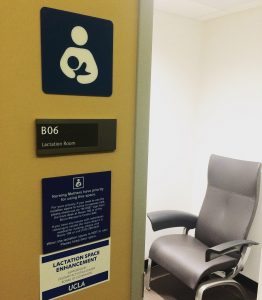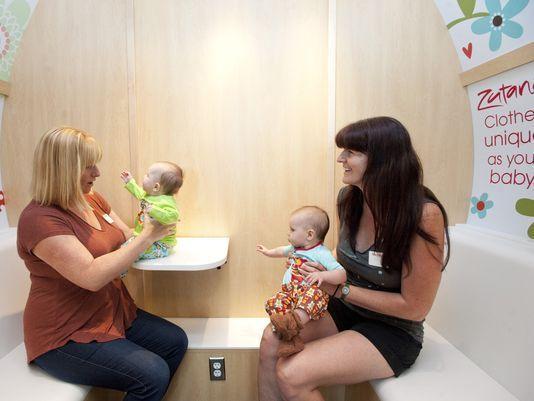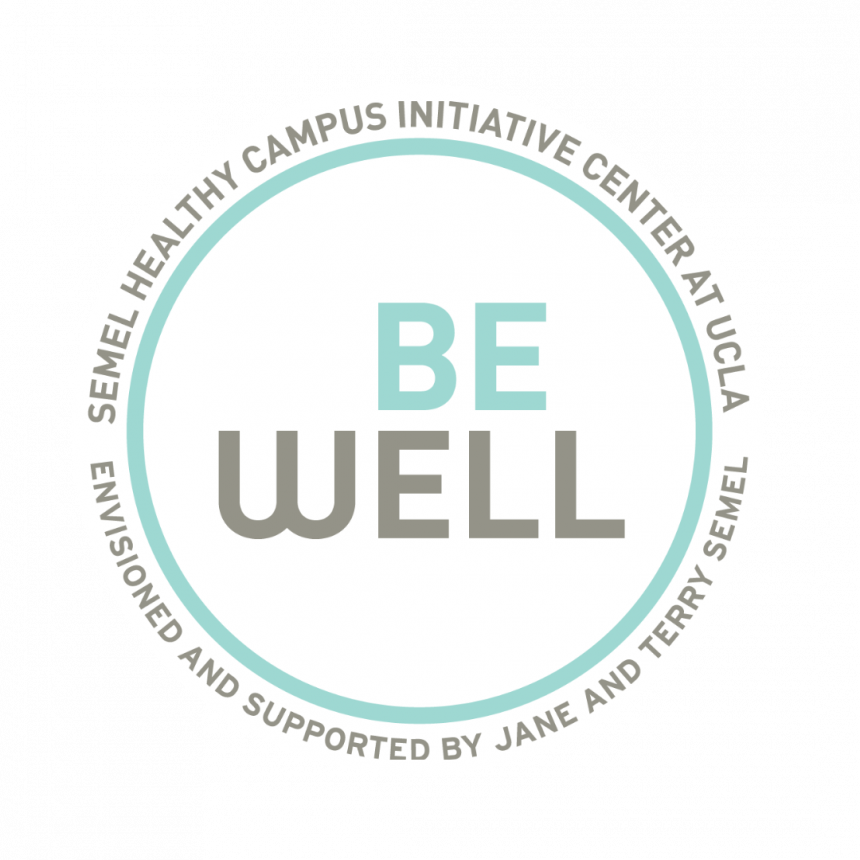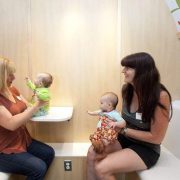How Can the Built Environment at UCLA Better Support Breastfeeding Women?
Now in its third project year, Creating Space, a graduate student led project, continues to research and advocate for improved services, policies, and support for breastfeeding and pumping students and staff at UCLA. Founded from the grassroots advocacy of the Mothers of Color in Academia de UCLA (MOCA) and funded by the Healthy Campus Initiative, the pursuit of accessible, appropriate lactation space at UCLA has been central to the Creating Space mission since its inception.
To document the status of UCLA lactation rooms, Creating Space undertook a comprehensive assessment of 13 UCLA lactation rooms in spring 2017 based on standards set by the American Institute of Architects, California state legal standards, and documented community needs. Creating Space also completed a needs assessment to document the experiences of breastfeeding and pumping mothers at UCLA that included two focus groups with student and staff mothers and an online questionnaire open to student, staff, and faculty mothers.
Mothers who took part in the focus groups consistently cited lack of access to comfortable and appropriate spaces and the lack of spaces across the UCLA campus as being major barriers to maintaining consistent breastfeeding. Focus group participants highlighted the need for improved campus lactation accommodations, as one participant noted, “I think there should be a room in every building. It is not insignificant to have to carry your pump across campus or across the street even to go pump. You have to get all your supplies together, you got to go leave your milk somewhere and go back again, and go get milk again. It is a nightmare.”
During lactation room assessments, the Creating Space research team found that no UCLA room met all California state legal standards. Nearly three-quarters of rooms were deemed not up to standard in regards to security and 64% of rooms did not meet accessibility standards. Respondents to the online questionnaire confirmed the issues of lactation room accessibility. Over a quarter of respondents cited having no private place to pump as a barrier restricting their ability to pump, and more than half of respondents reported having been unable to pump as desired because they could not find or access a lactation room on campus.

UCLA lactation room in the Student Activities Center (SAC), B- level.
Utilizing funds from Creating Space’s Healthy Campus Initiative grant award, the Creating Space team is currently arranging lactation room improvements across campus to address some of these issues. Creating Space is coordinating these improvements by working with room managers and purchasing amenities for the rooms such as bulletin boards for educational materials, workstations for mothers to use while pumping, and mini-fridges for milk storage.
Creating Space hopes to create greater institutional changes to the management of lactation spaces at UCLA. Access to lactation rooms on campus varies widely and can be a barrier to mothers needing to pump. Some rooms require the individual to call a third party to learn how to gain access to a room or require women to retrieve a key from another location, while others are easily accessible and open to anyone. Ideally, all lactation-use-only rooms on campus would be equipped with a universal coded locked door to facilitate easy and consistent accessibility and limit use of the rooms to the intended population only.
UC Davis–a model campus for breastfeeding policy– successfully implemented the universal lock system as part of their Breastfeeding Support Program. Any breastfeeding student or employee can register online for the Breastfeeding Support Program and are then provided with a map and access codes to all lactation rooms. An additional benefit is that room usage can be tracked through the coded lock. In addition to the Breastfeeding Support Program, UC Davis has close to 50 lactation sites on campus as well as 12 sites at the UC Davis Medical Center available to all university affiliates.

Care Connect Center 2. Community Health Sciences 33-337 3. Community Health Sciences 17-311 4. School of Dentistry Women’s Restroom 53-079 5. Reagan Medical Center B-706 6. Student Activities Center 7. Doris Stein Pediatrics Department, Mother’s Room 8. Rehabilitation Building A-376 9. Murphy Hall A-272 10. Franz Hall 2nd Building 1268 11. Jules Stein Eye Institute 13-245 12. Geffen Hall 204
In contrast, UCLA has only 10 official lactation spaces for the entire campus community, the majority of which are on south campus. The lack of lactation rooms forces mothers to walk long distances to pump in between classes or during tight work schedules. Creating Space recommends a two-fold approach to addressing the campus need for more lactation rooms:
- All building renovations and new building construction should prioritize adding a designated lactation room, particularly buildings in north campus.
- Due to the long timeline of construction and renovation, to address this problem for current and prospective students and employees, UCLA should invest in modular lactation pods. Mamava lactation pods are mobile lactation suites that are designed for private offices and public spaces. The suites come with a multifunctional keypad lock, power outlet, fold down table, and a bench. These mobile lactation suites would provide a temporary solution to the lack of spaces on campus, and would have a major impact on the experiences of breastfeeding and pumping mothers at UCLA.
As a world renowned public research university committed to excellence, innovation, and inclusiveness, UCLA has the opportunity to be a leader in breastfeeding support and to create a positive impact on women’s health. Creating Space, in partnership with campus stakeholders and community mothers, will continue to advocate for improved breastfeeding accommodations, providing a model for other universities and community organizers to create a supportive breastfeeding climate for students and staff.

Mamava lactation pod

Inside view of Mamava lactation pod.
Written by: Cristina Hunter, MPH Student; Emily Bell, MPH Student

